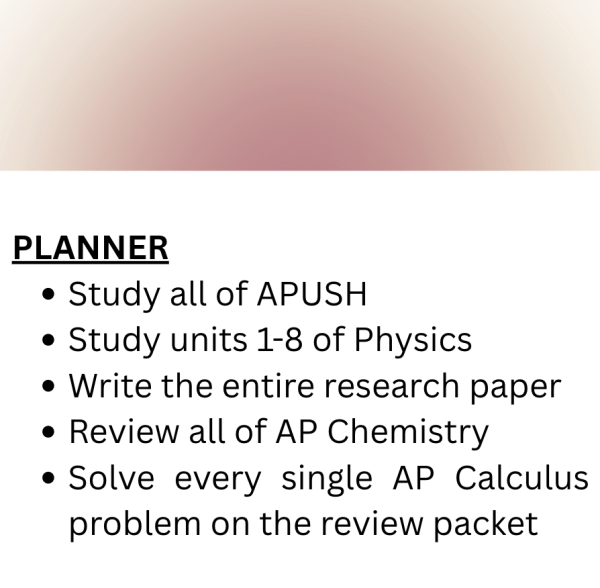A Different Way of Structuring School
What is the best way of structuring the school year, school day, and course selection?
Hiking in the mountains in Greece during fall break.
EDITOR’S NOTE: Follow CVHS sophomore Leo Bader in an ongoing column series as he spends this year as an exchange student navigating the differences between the lives of youth in Berlin and Houston.
For most American students, it’s a given: summer break is a 3-month respite from all of the worries and stresses of the academic year. However, for students in many other countries a break this long is unheard of. Berlin is one such city. Breaks are much more evenly spaced out during the year, leaving kids with just 6 weeks of summer.
At Carnegie, breaks are sparse during the school year. We have Thanksgiving, Christmas, and spring break, along with a few single days off. In contrast, in Berlin, it feels like school is constantly closing out for a week or two.
Starting in October, we have two weeks of fall break. Then there are 2 weeks of Christmas break. Just a month later comes a week of winter break. To close out, there are two weeks of Easter break in April, leaving students with a total of 7 weeks of no school during the year. This leaves the Berlin school year with 194 school days, while the HISD year has 174 school days.
This calendar ends up leaving school much more evenly spaced out. There always seems to be a break coming up, which certainly feels motivating—and coming back from summer break isn’t as hard as it is in Houston because school didn’t end all that long ago.
However, the system isn’t perfect. With more or less frequent weeklong interruptions, it becomes more difficult for teachers to keep students concentrated on a subject. For instance: in math, we just started a new unit. Two lessons into the unit, fall break arrived—2 weeks of no math whatsoever. When school starts up again, most students will probably have forgotten most of what was taught and have a test on the subject coming up.
School breaks aren’t the only place where this “spaced out” mindset is apparent. The school day schedule is similar—after 2nd period there is a 20 minute “second breakfast break,” along with an hour-long lunch period after 4th period. The day goes from 8:00 to 3:40, except for Tuesdays, on which students are dismissed at 2:05.
This schedule works similarly to the breaks: while it is beneficial to give students frequent breaks to refresh themselves, they are always getting excited about the next escape from class—leaving them less focused on the material itself.
However, the early dismissal day is great, provided that the curriculum can accommodate the shorter day. It allows for clubs to have longer meetings after school, offers time to catch up on work and lets students have a more relaxed afternoon.
The way subjects are broken up also reflects a more even structure. At Carnegie, we have our 4 core subjects, along with 3 electives that we have control over. In Berlin, it looks very different.
There are 12 subjects that students are required to take—this includes German and 2 foreign languages, literature and art classes, and PE. In addition to that, students can choose 2 electives. These can be repetitions of classes that students particularly enjoy or new subjects like debate or politics.
While splitting things up like this allows teachers to focus on a more specific and in-depth curriculum, it seems to be a little bit too much to pack everything into one week. Some classes, like German and math, meet for several hours a week. Others—such as geography—meet just 45 minutes a week, which makes it hard for teachers to cover a meaningful amount of material.
A 2019 study found Berlin to have the worst educational system of all the German regions– the dropout rate was 3% higher than the national average and proficiencies in core subjects were similarly lower. However, these negatives don’t necessarily come from the differences described above– the study also showed that untrained teachers are much more common in Berlin.
In contrast, HISD schools do fairly well– in 2017 92% of them passed examinations by the Texas Education Agency (TEA). However, as many of you surely know, there is a current budget crisis in the district, which is threatening to overcrowd schools and decrease funding per student. A district takeover by the TEA is also a very real possibility.
Overall, the two school systems have vast differences—but it is very hard to say if one is better than the other; every student thrives differently. That makes it important for schools and school districts to experiment with different ways of structuring their teaching to see what helps their students have the best and most efficient learning experience.
Your donation will support the student journalists of Carnegie Vanguard High School. Your contribution will allow us to cover our annual website hosting costs and fund field trips, competition fees, and equipment. We appreciate your support!

I am a sophomore who loves jazz, plays the saxophone and piano, runs on the track team, and am interested in photography and videography.
Instagram:...






David • Oct 22, 2019 at 12:05 pm
Over here in the US, our educational system is so bad that anything looks better. It’s interesting to see perspectives on how a school system in a foreign country is seen as ‘poor’ in comparison to others within that country, when that system is better than anything we have. I suppose the grass /is/ always greener.